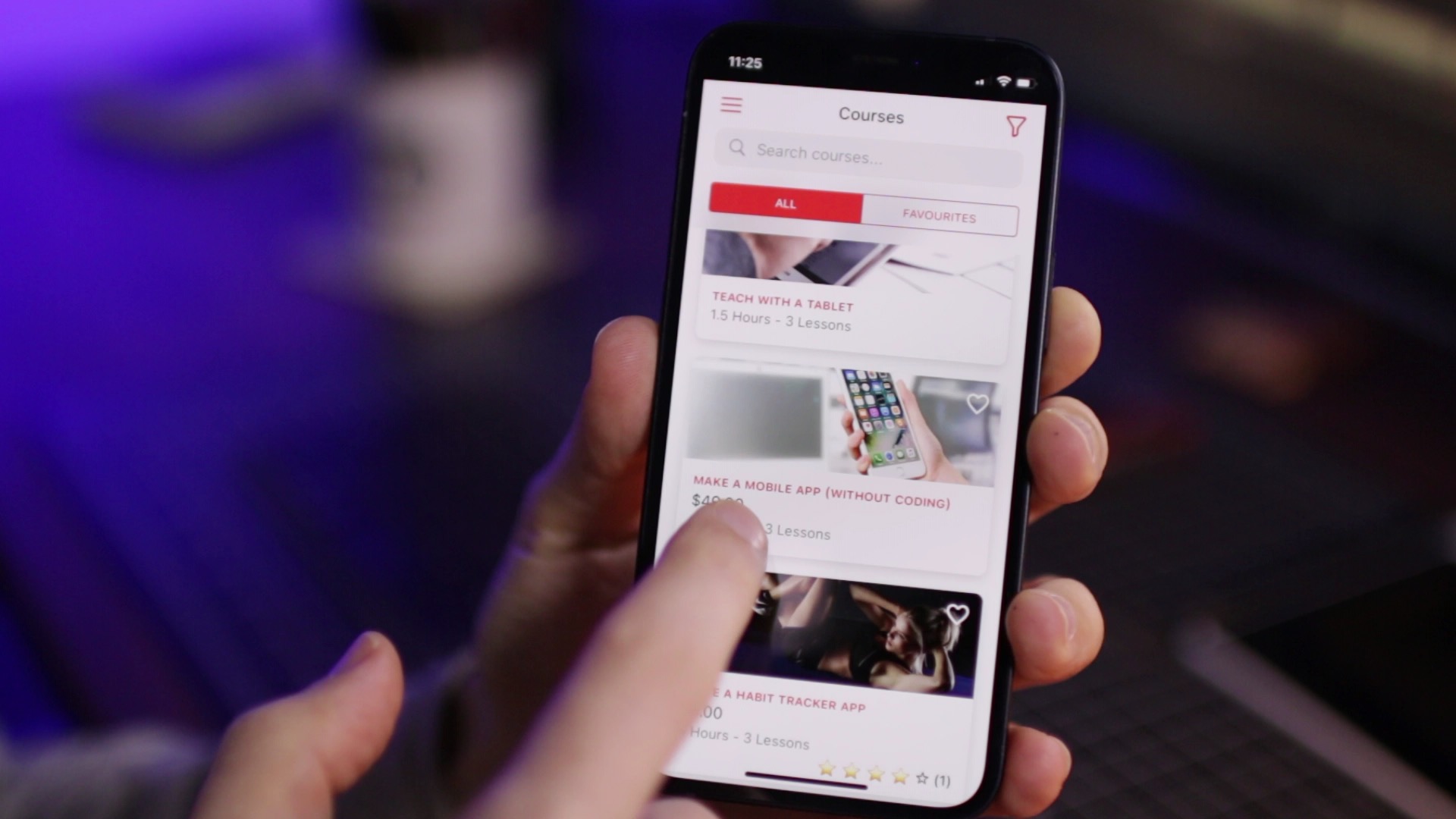Miguel from Grumo.com here.
As you may have noticed, recently, I’ve been creating mobile apps left and right.
The tool in question that has allowed me to build these apps in record time is called Glide.
Glide is what it’s known as a no-code app building platform.
However, Glide is by no means the first no-code app building platform in the market.
Existing mobile app players like Adalo, Bubble, Thunkable, or AppSheet have been around much longer.
However, after trying them all, for me, Glide comes on top for three main reasons: 1. Easy of use, 2. Design, and 3. Innovation
1. Ease of use: I’ve found Glide extremely intuitive and easy to use compared to its main competitors.
I love their modular design, where you can add and remove components and change their look in seconds.
It reminds me of playing with Lego. You have many bricks to choose from, which allow you to build almost infinite variations of your apps in minutes.
Glide has great documentation with dozens of tutorials teaching you how to use Glide if you’re starting out.
They also have a very active community for developers where you can get answers to your questions almost immediately (sometimes by their very own CEO!)
Finally, they have a fast-growing app template marketplace. Glide templates are fully working apps that you can customize to suit your own needs saving you a ton of time.
2. Design: I’m quite a stickler when it comes down to user interface design and have no patience for ugly looking platforms.
Glide has one of the most beautiful UI’s I’ve seen in a long time, which extends to the design of the apps that you can build with their app editor.
One of the smartest moves by the folks at Glide is limiting how much your app’s design can be changed.
As a long-time programmer myself, I’ve found a great deal of time is wasted trying to make things look good.
Most no-code platforms give their users too many design options, which becomes a time-suck. Unless you have a good eye for design, it only helps to end up with an ugly looking app.
Glide offers very limited design customization. Basically, you can change your app’s icon, the accent color, and the overall theme; 3 light themes and 3 dark themes.
It’s almost difficult to create an ugly looking app with Glide. The only caveat is that most Glide apps look quite similar.
However, I rather have similar-but-beautiful looking apps than unique-but-ugly looking apps any day.
3. Innovation: before choosing a platform, I love to research the team and the history of the company behind it.
I want to know who the founders are, what makes them unique, and their vision.
For the company as a whole, I’m interested to know if they are well funded and have a solid set of investors/advisors.
In a sense, by choosing a platform, I’m acting like an investor – I’m investing my most precious asset: my time.
I want to know the company is going to stick around, that they have a long-term vision, and that they are continuously innovating to make their vision come true.
All of the above checks with Glide. They have really smart founders, their main investor is YCombinator (the top startup incubator in the world), and they keep innovating almost as fast as Tesla releases new software updates for their cars.
Should you learn how to use Glide?
Apps are already a multi-billion industry with both the Google Play Store and App Store posting app purchase records year over year.
There is a huge demand for people who know how to build apps, but only a small percentage of the population has the skills to create apps.
Now thanks to no-code tools like Glide, almost anyone with basic tech skills can build beautiful apps that can rival the functionality and design of traditional native apps.
Now, I know many of you are not looking for jobs as app developers. However, I know many of you would like to have a custom app built but don’t have the resources and time to get it made the traditional way.
I know I didn’t until recently. I’ve had ideas for dozens of apps, which never came to fruition because development costs were way beyond my reach.
Compare that to now. In the last few months, I’ve built 9 mobile apps:
- Grammar App (Grammarly)
- Book App (Tribe of Mentors)
- Mental Models App (Farham Street)
- Audio Advice App (Voiz)
- Habit Tracker
- Workout App
- Portfolio App (Arte De Julia)
- Course Hosting App (CourseApp)
- Quiz Creation App (QuizApp)
Any of those apps would have cost well over $5K to build if I’d tried to hire a native app developer.
They would have taken much longer to build and probably wouldn’t have looked as good design-wise.
Ok, so I’m super excited about playing with Glide building apps (my new Legos!).
Glide has not sponsored me to say good things about them (they should!), and I usually don’t write emails raving about the tools I use.
This newsletter is how I engage on a more personal level with my students and followers, so when I find something worth sharing or exciting happening in my life, I feel compelled to let you know about it.
I hope you enjoy these updates!
Let me know what other apps you’d like to see coming up.
Or… well, start learning how to build your own apps with Glide!
Peace. Love. Cookies.
Miguel @ Grumo.com
P.S. Thank you! I just want to say thanks again to all the awesome buyers of my first two paid apps; CourseApp and QuizApp. Your support has been very encouraging to keep me motivated in these bizarre times. Onwards!
.
.

Leave a Reply